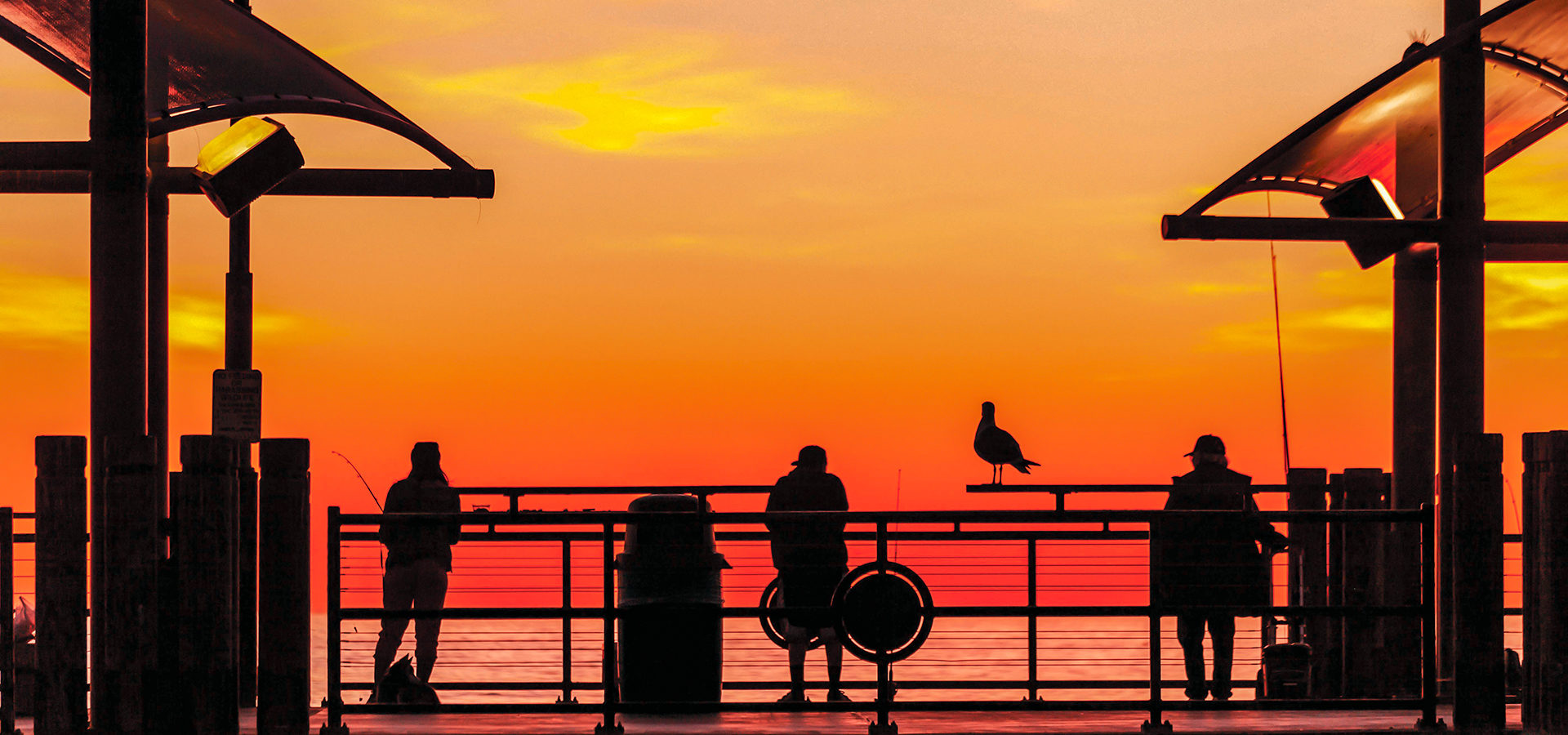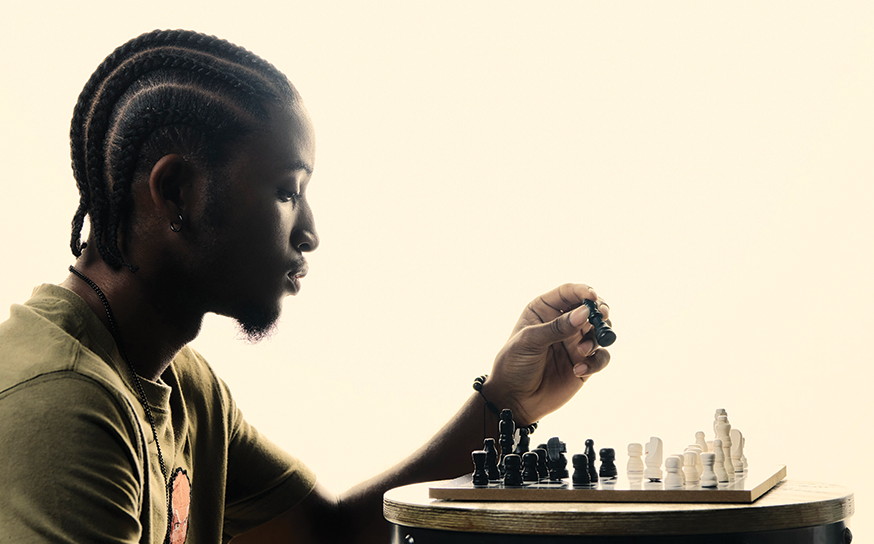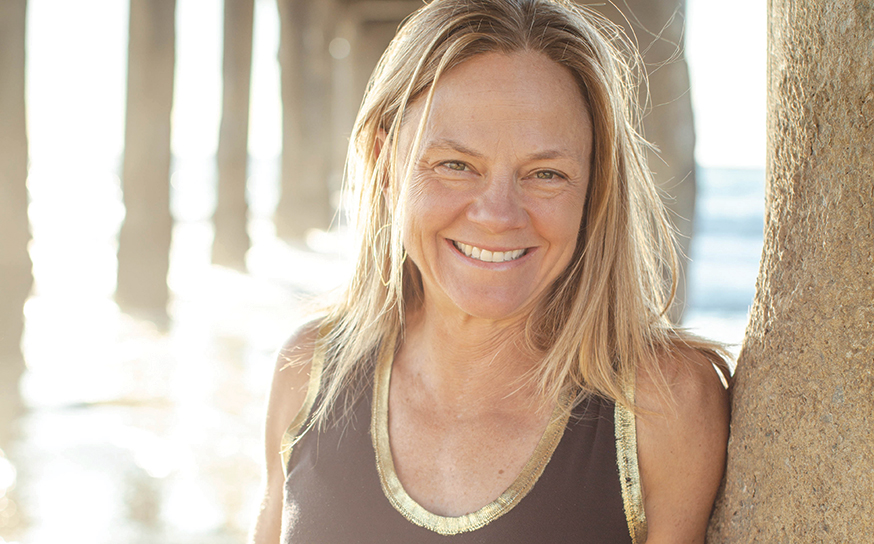The Redondo Beach Pier, with All Its Salty Character and Charm, Is Here for the Long Haul
Endless fun.
- CategoryPeople
- Written byJared Sayers
- Vintage photos and postcards courtesy ofRedondo Beach Public Library
For a while as a kid, crabs were my favorite underwater sea creature. I know. Strange. Most kids like whales, sharks, dolphins. But me? Crabs. Why, you ask?
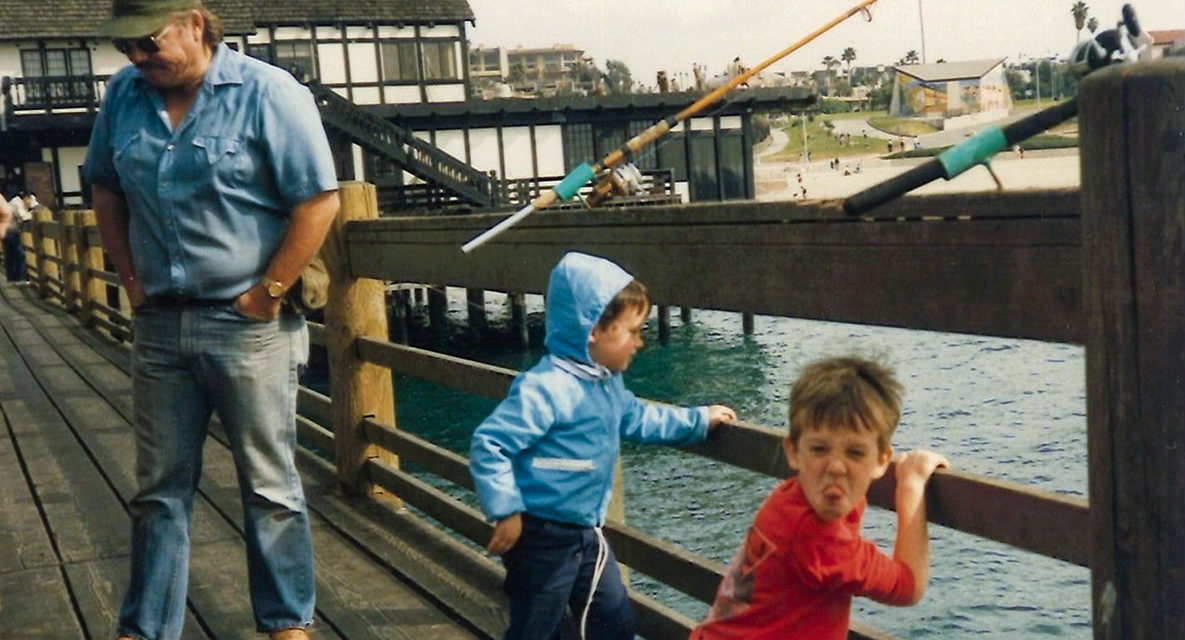
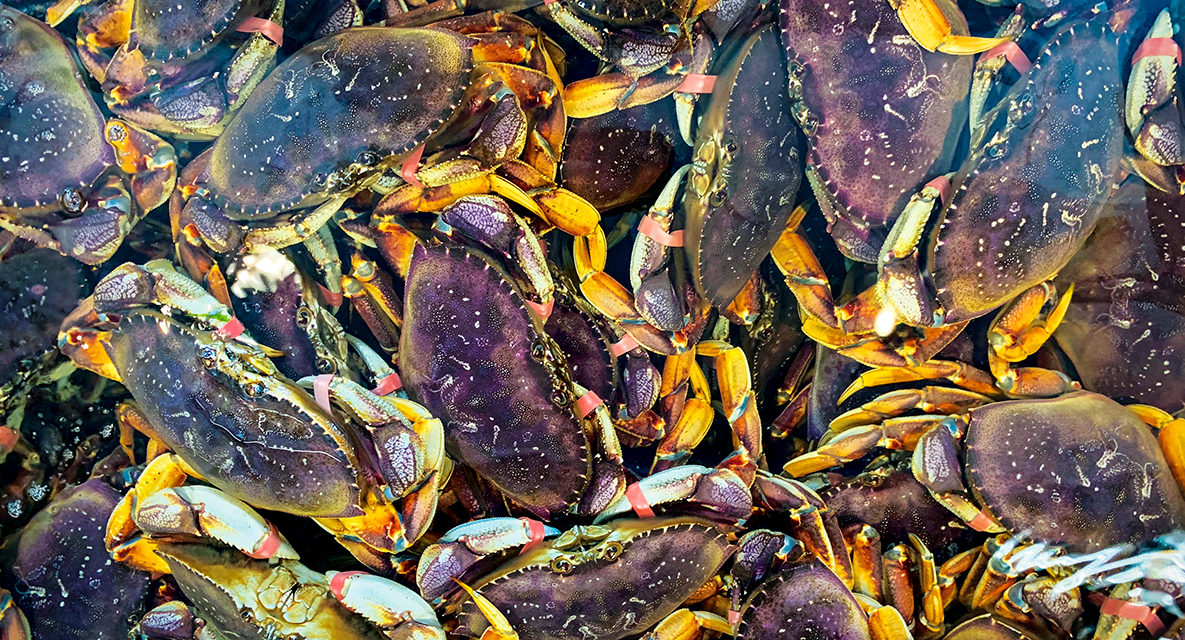
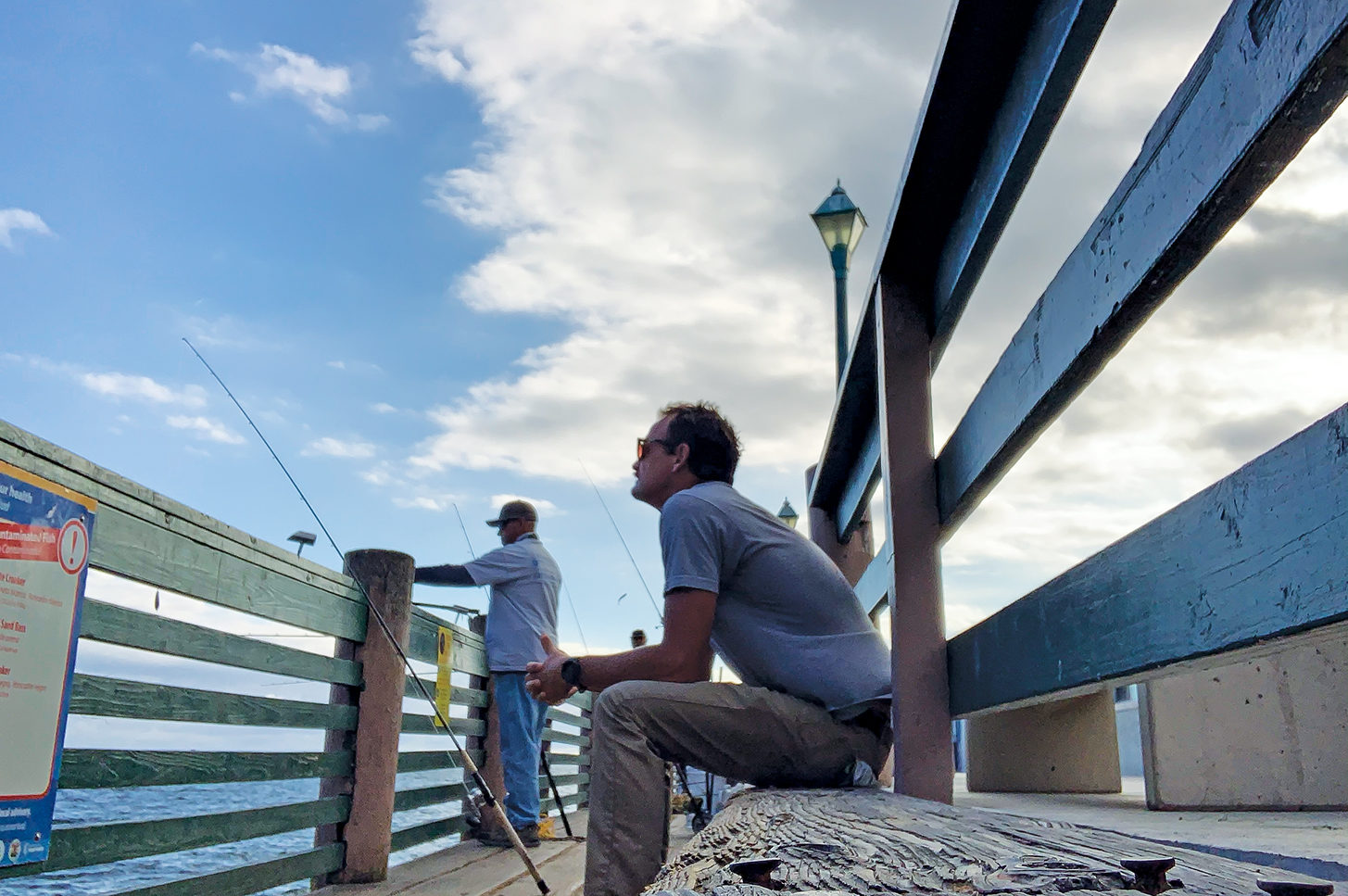
Above: The writer’s personal photos of memories on the pier.
•••
My mom would take me to the Redondo Pier when I was a child. There was a seafood market that had a series of outdoor tanks filled to the brim with crabs. They were piled on top of one another like bricks making up a wall. They would get stacked from the bottom of the tank all the way to the top, with their claws breaking the water’s surface and positioned at about eye level. So for a 6-year-old boy, it provided plenty of opportunity for gazing and curiosity.
Every so often a man would come out from the back, see my googly-eyed fascination for the underwater crustacean and stick his hand in the tank to pull out a crab so I could take a closer look. Their legs each seemingly had a mind of their own, and their claws extended fully—waiting to clamp down on anything foolish enough to get in their way.
Typically I would fall behind, so my mom would take me by the hand and we would continue down the pier—aimlessly wandering and killing time. In hindsight, every time we walked out on the pier, the proximity between life on land and life under the sea began to shrink for me.
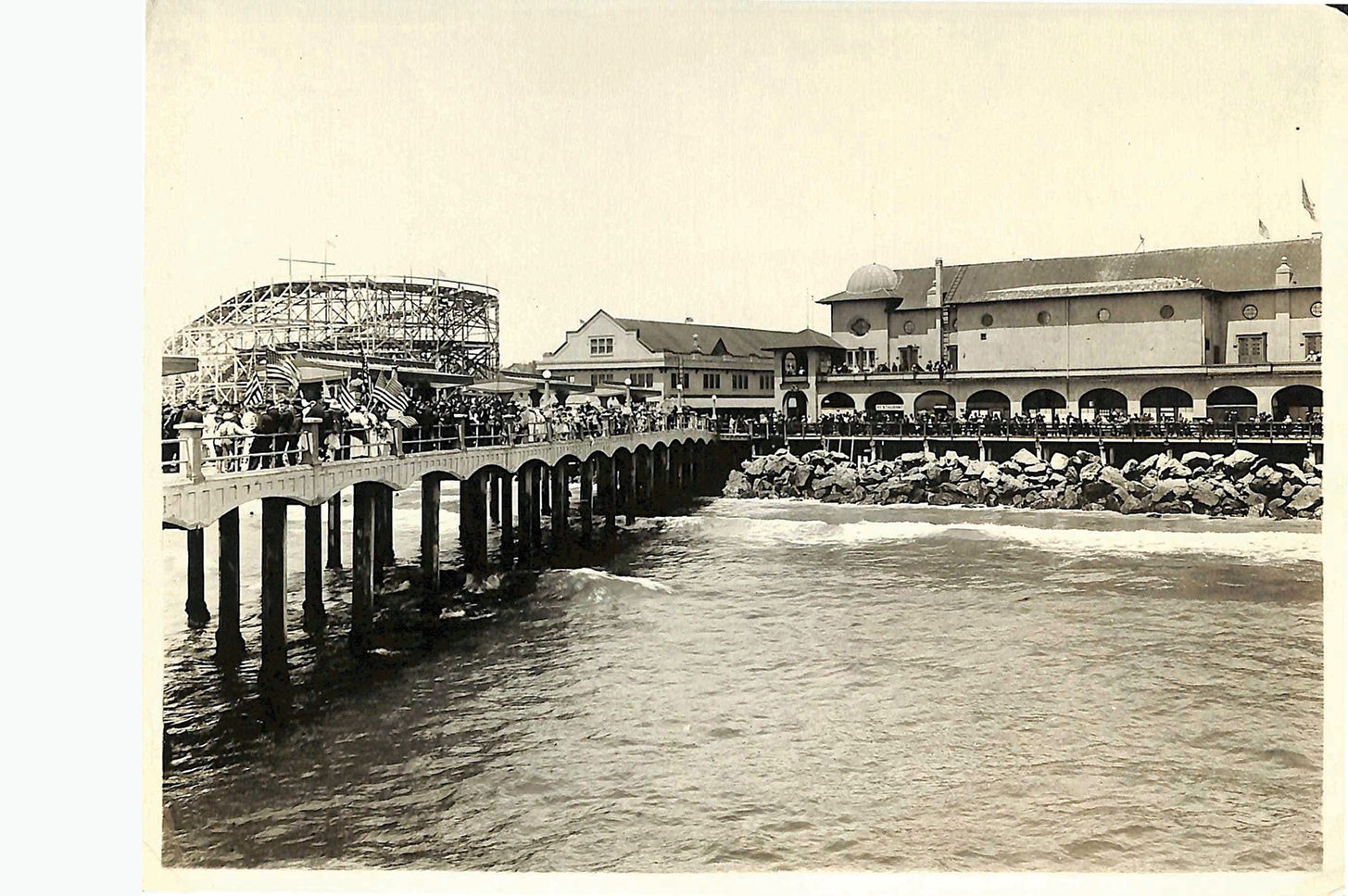
View of the roller coaster and Pavilion from the Endless Pier in 1926.
I remember looking down into the white buckets placed at the feet of the local fishermen at the end of the pier. Each bucket would have something different in it. Small fish, bigger fish, octopus, stingray … you name it. And always looming nearby would be a pelican that—to a kid—looked more like a prehistoric pterodactyl. The pelican seemed almost as tall as I was, yet completely uninterested in me because it was transfixed over my shoulder at the fishermen’s buckets—waiting for one misstep and an open window of opportunity to swoop in and pilfer whatever was inside for a quick, easy meal.
The salt air, the smell of fish in the fryer and the sounds of arcade games off in the distance all made for one unique sensory overload that I could only find in one place: the Redondo Beach Pier. That is what life was like on the pier in 1987. But now—34 years later—much has changed, yet much has also stayed the same. So where did it all start? Like any good story, it started a long, long time ago.
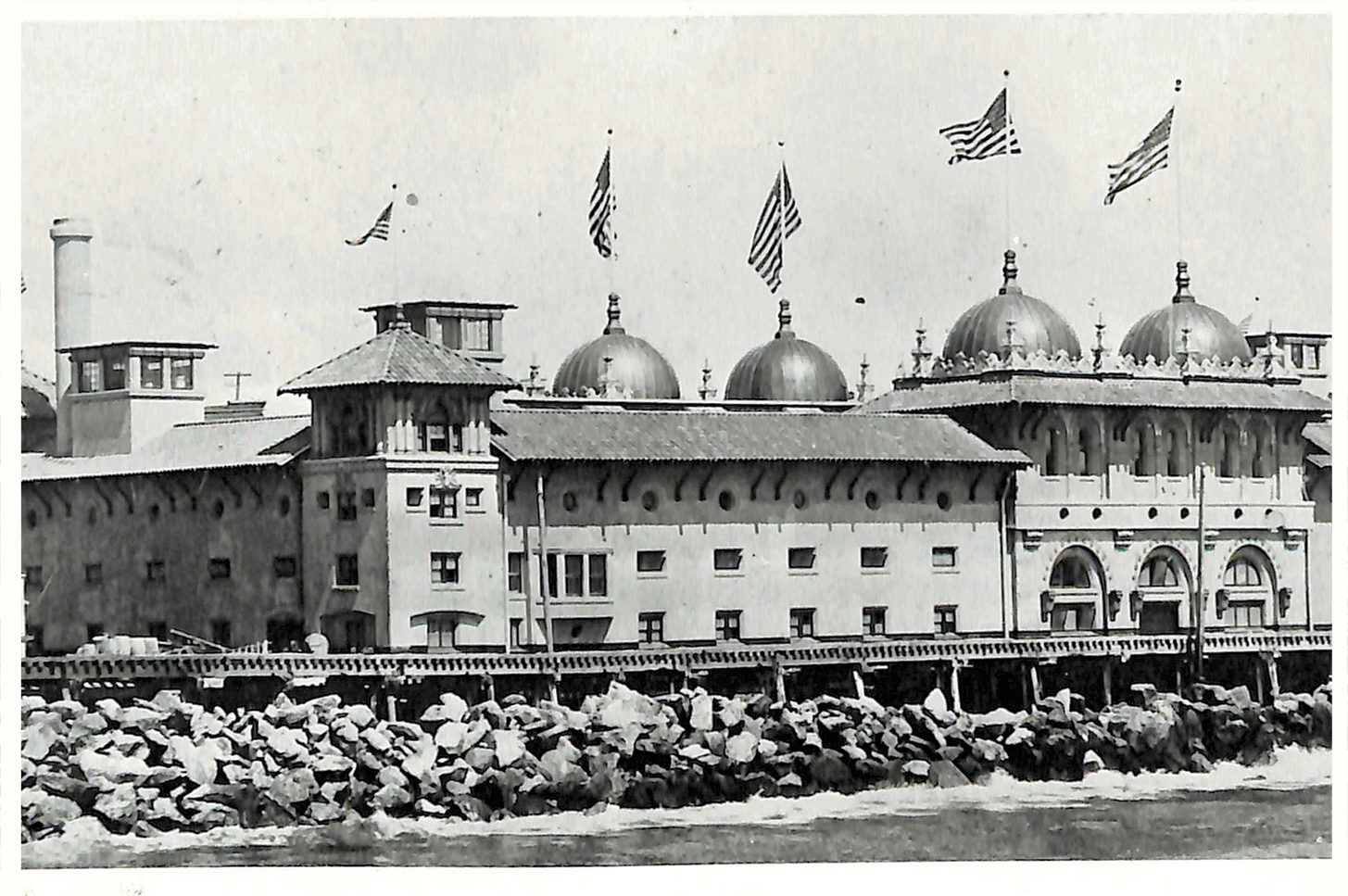
View of the Bath House, approximately 1910.
At its inception there were actually three wharves, the first of which was built in 1888. It was shortly followed by a second, constructed in 1895, and wharf #3 was erected in 1904. By 1910 the three wharves became the major hub for importing and exporting in Los Angeles. Their primary cargo: lumber. The rate of building in Los Angeles at the time was nothing short of an explosion, so naturally lumber imports quickly became an entire industry and thus one of the city’s most stable businesses.
It was about this time that tourism also began to flourish. Adjacent to the wharves was Hotel Redondo, located just off the beach. It gave tourists all the amenities and high-end accommodations one would expect when going on a posh vacation: an 18-hole golf course, tennis courts and 225 rooms right on the water.
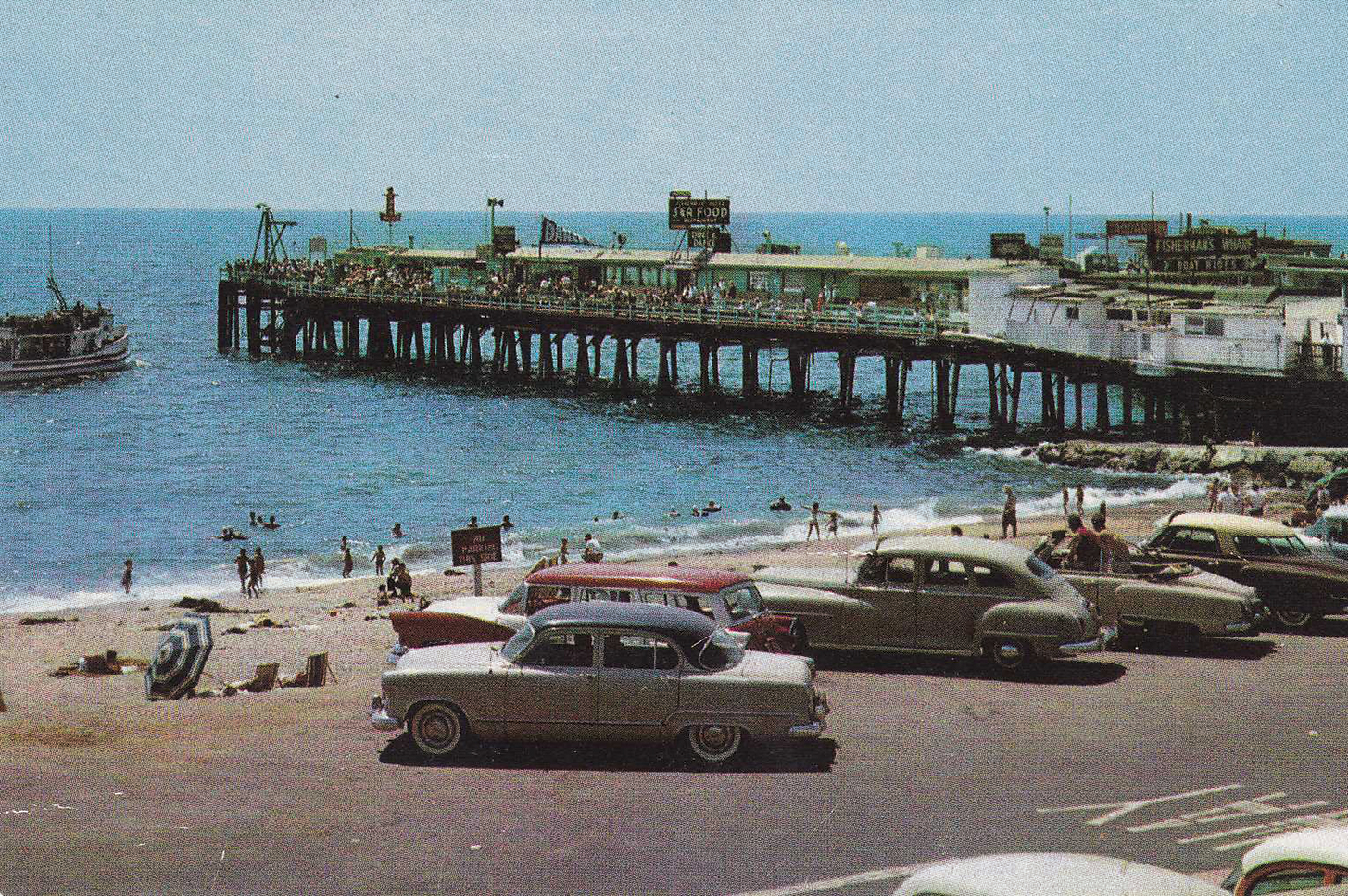
By 1926 all three original wharves had taken the brunt of multiple winter storms and slowly were dismembered. In their place stood a newly constructed fishing pier to the south and a brand-new municipal pier just to the north.
“I can’t help but hearken back to those walks on the pier with my mom. I could feel history and richness everywhere. Much of it has stood the test of time.”
To protect the piers in 1939, Redondo’s first breakwater was built—but it only provided subpar protection from the harsh winter seas. Reason being, most marinas are fully contained with inland basins, but King Harbor is situated completely seaward of the existing shoreline—exposing it to the harshest of ocean conditions.
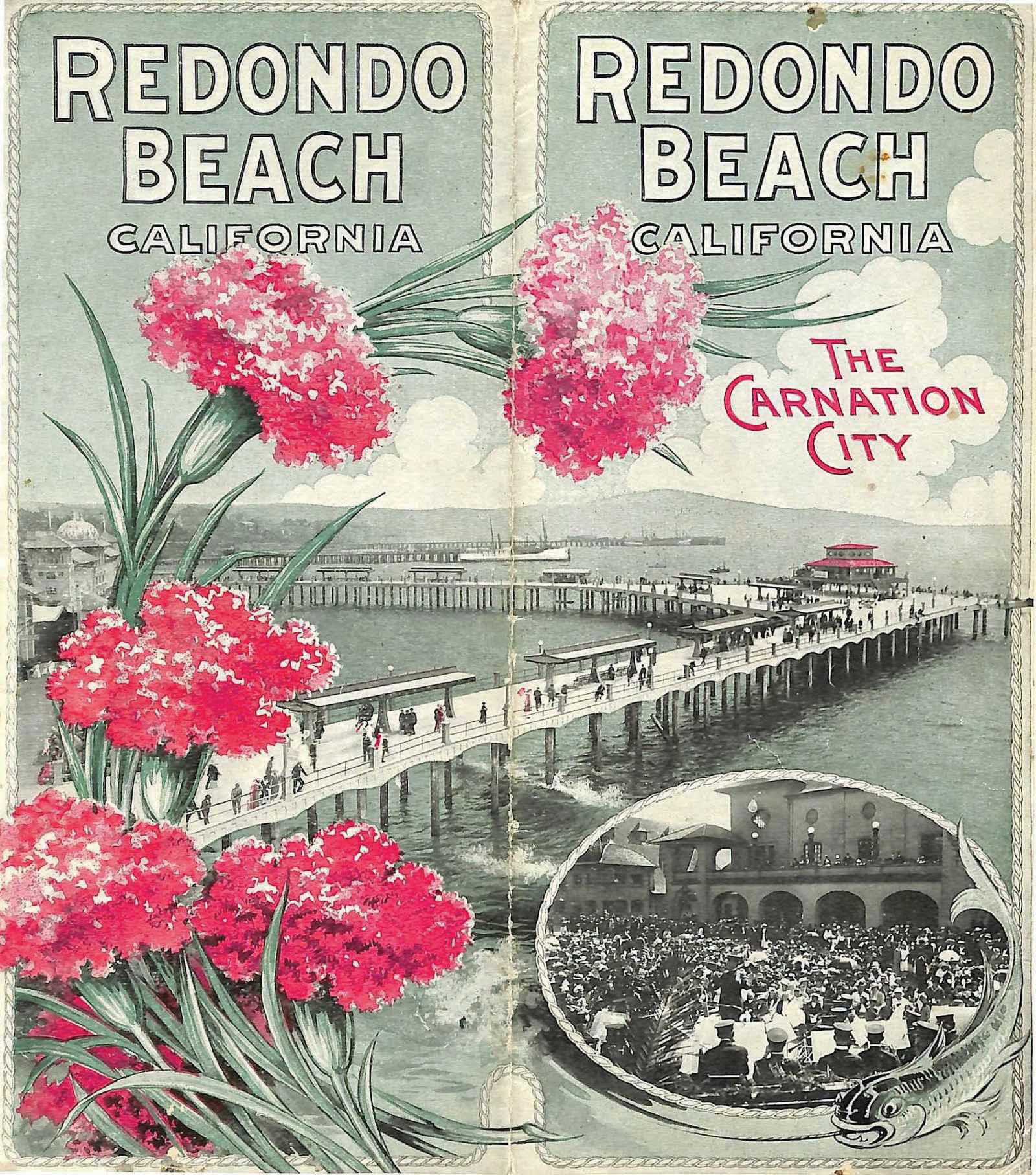
By 1958 the bigger, better Redondo Beach Breakwater was completed for a little over $5.5 million with an obligation to the federal government to build the $45 million marina that stands today. The marina includes 1,450 boat slips, utilities, a swimming facility (seaside lagoon) and several parking lots. Yet winter storms continued to ravage the outer breakwater with massive storms in 1962, 1963, 1980, 1983 and 1988, with major repairs and modifications accompanying each.
1988: That’s where I come in. An 8-year-old kid who enjoyed taking walks with his mom and pressing his nose against the glass of the crab tanks. All innocent and tranquil, but then came the storm. Innocent and tranquil it was not.
The ocean bared its teeth on our seaward-facing breakwater and marina. For perspective, I remember walking down to the beach after the storm had blown through and seeing couches, furniture and a plethora of other miscellaneous objects strewn across the sand. Apparently, the storm had its way with a nearby oceanfront hotel just on the other side of the breakwater. Waves crashed up against the building, destroying about one-third of it and taking many of its belongings and furnishings in the process. Old, dilapidated, salt-encrusted furniture pieces were now left in the middle of the same beach I would eat crackers on after hours of summertime boogie boarding.
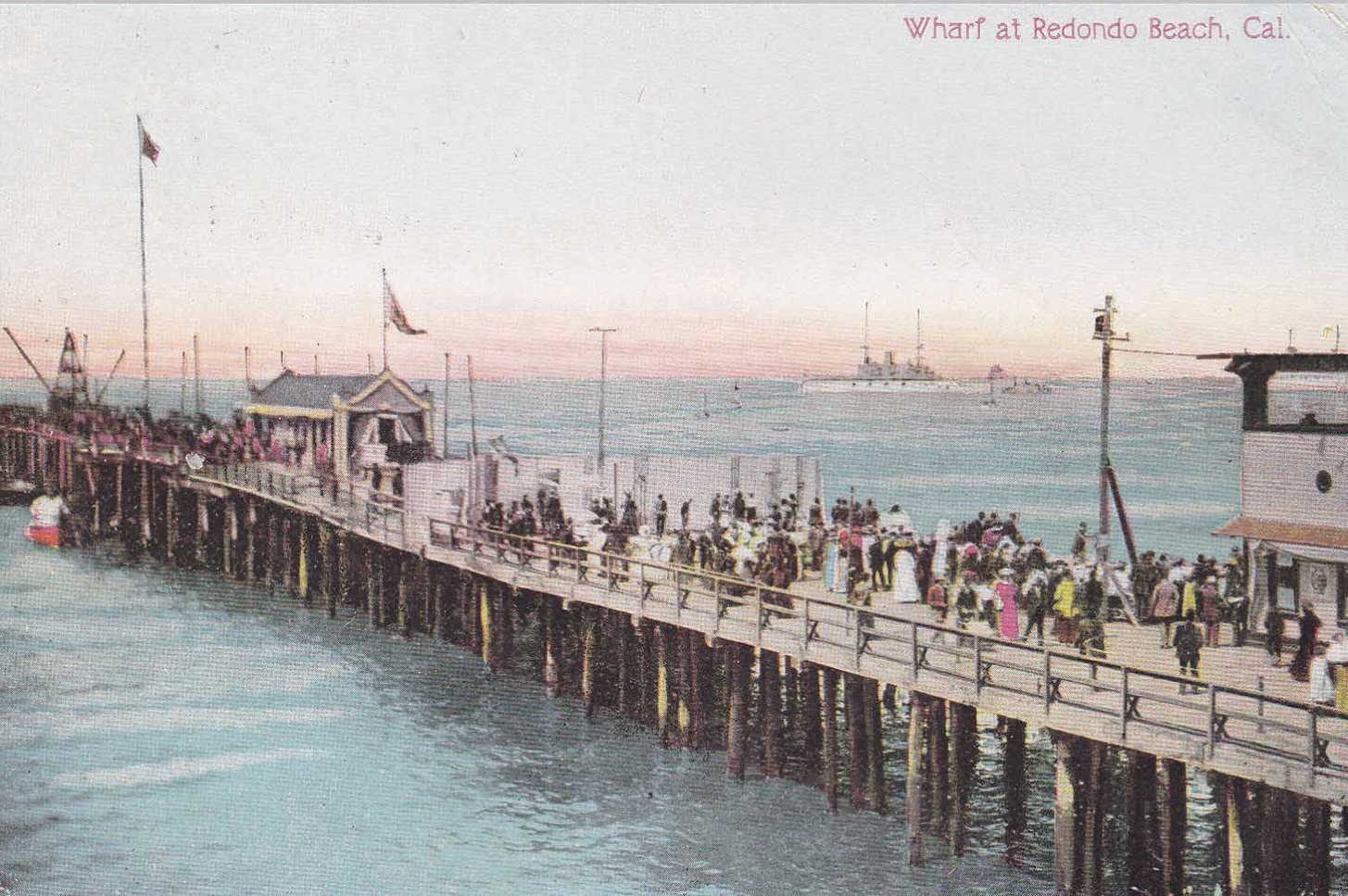
It was the same storm that unknowingly loosened some electrical equipment under the pier, which sat like a ticking time bomb well after the storm had passed. Just a few months later, the fire department received a call that smoke was billowing out from underneath the pier. At the time, the pilings were coated with a water-resistant material that unfortunately was also quite flammable. So within minutes, flames erupted.
I recall standing on the Esplanade at about Avenue A and watching the plumes of black smoke soar thousands of feet up in the air. I couldn’t believe it. Helicopters flew overhead, and people were all up and down watching as our Redondo Pier lit up like a Christmas tree.
“Were the crabs going to be OK?” I thought. To the credit of the fire department, the fire was put out within a matter of a few hours. But 15 businesses were either incinerated or now in the ocean.
After the fire of ’88, the walks with my mom on the pier felt a bit more ominous. Parts of the pier that were left would stick out from the ocean, charred and mangled, with old debris washing up on shore for months thereafter.
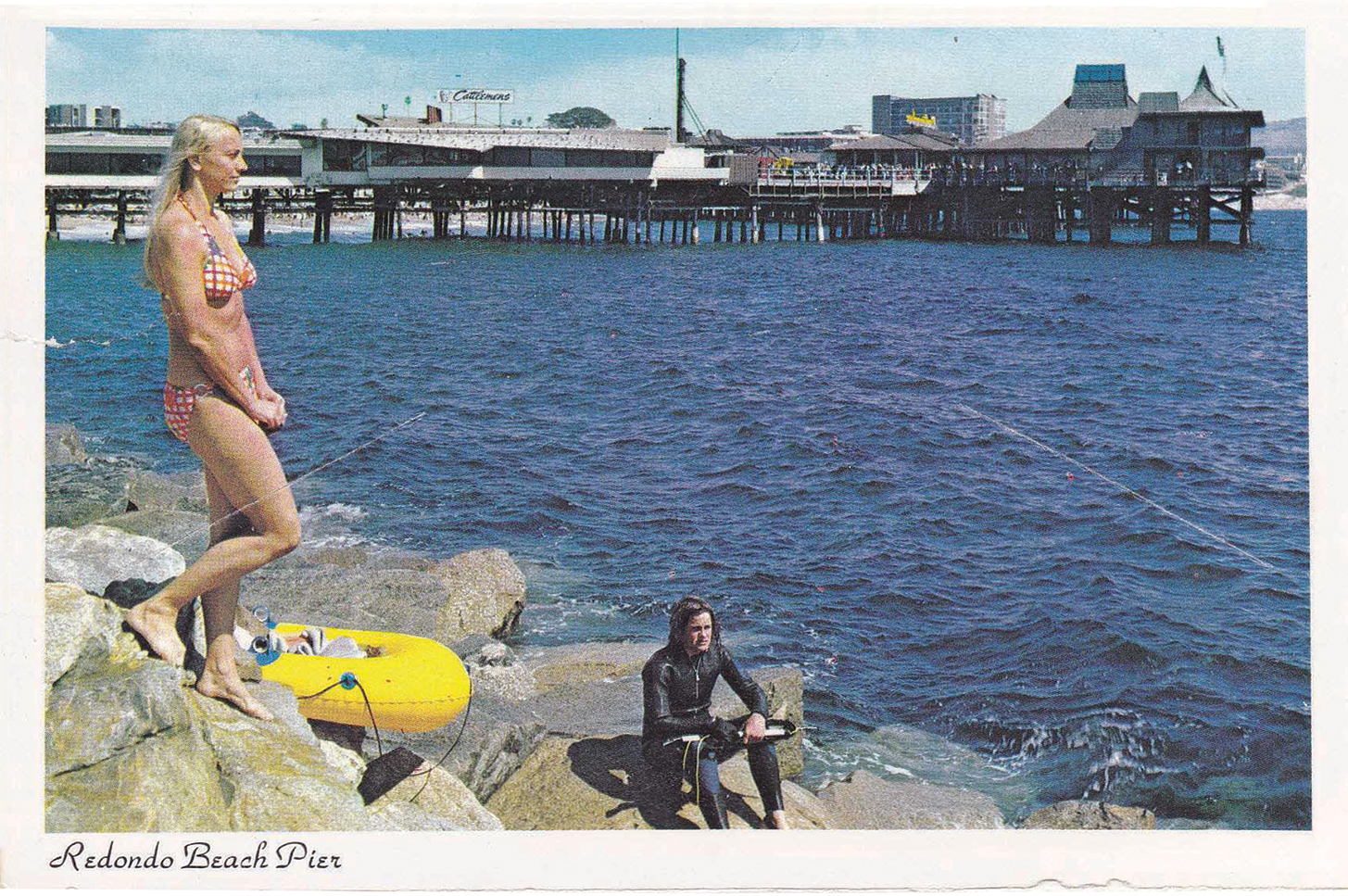
A rebirth was announced in July 1993, and within just two short years the old remains of the fires were cleared and a brand-new concrete structure was erected—firmly rooted to the ocean floor, rising about 25 feet above the ocean surface. Since the new structure was completed, new tenants have taken up space, foot traffic has increased and newer development conversations continue to be debated for bigger, better, more.
What’s in store from here on for the Redondo Pier? Only time will tell. Evolution and progression are imminent. Yet there is a richness embedded in the history of the Redondo Beach Pier that mustn’t be overlooked.
I can’t help but hearken back to those walks on the pier with my mom. I could feel history and richness everywhere. Much of it has stood the test of time. Walk through the outdoor fish market at Quality Seafood and tell me you don’t feel it. Or stroll to the end of the pier and see if you are greeted by a prehistoric-looking pelican.
Sneak a peek into the fishermen’s bucket to see what’s coming out of the ocean that day. Move a bit slower when visiting, and you’ll notice it’s all still there.
Call me stodgy, or say I lack an evolutionary mindset … but a sanitized, wiped-down, bigger, better version just doesn’t seem like the most appropriate next move. Crab tanks lend themselves just fine to the essence of a place that has faced seaward for well over 100 years.
Southbay ‘s Annual Spring Style Guide Has the Latest Fashion Trends, Jewelry, Home Goods and Gifts!
Shop local and support our amazing businesses.






